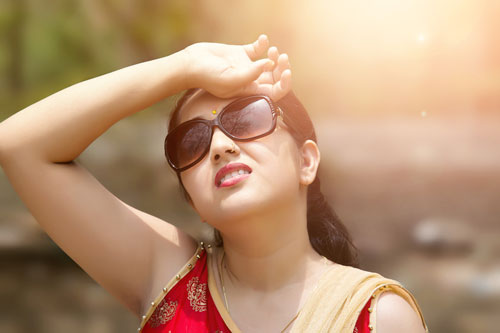Happy May! Or should I say, “Welcome to UV Awareness Month,” as so-named by Prevent Blindness America. As Eye Care Professionals, we know that UV has harmful effects on the internal structures of the eye, but do you know that some medications can compound the effects of UV exposure?
 Certain medications taken for systemic conditions combine the effects of chemicals and light, known as photoactivation, to result in phototoxic and photoallergic reactions. In phototoxic reactions, chemicals in the drug absorb light, causing molecular changes that result in toxicity, possible changes to cell DNA and cell death. Less common are photoallergic reactions in which UV exposure changes the structure of the drug, creating antigens that trigger an allergic response from the immune system, resulting in inflammation. UVA (320-400nm) exposure is the most likely cause of those reactions, although some wavelengths within the visible and UVB (290-320nm) spectrums have been known to cause reactions as well. Of particular concern to ECPs are reactions involving the eyelids and periorbital tissue. While men are more likely to have photoallergic reactions, they can occur at any age in all genders. What’s more, some medications have a side effect of pupil dilation, increasing UV exposure and light sensitivity within the eye.
Certain medications taken for systemic conditions combine the effects of chemicals and light, known as photoactivation, to result in phototoxic and photoallergic reactions. In phototoxic reactions, chemicals in the drug absorb light, causing molecular changes that result in toxicity, possible changes to cell DNA and cell death. Less common are photoallergic reactions in which UV exposure changes the structure of the drug, creating antigens that trigger an allergic response from the immune system, resulting in inflammation. UVA (320-400nm) exposure is the most likely cause of those reactions, although some wavelengths within the visible and UVB (290-320nm) spectrums have been known to cause reactions as well. Of particular concern to ECPs are reactions involving the eyelids and periorbital tissue. While men are more likely to have photoallergic reactions, they can occur at any age in all genders. What’s more, some medications have a side effect of pupil dilation, increasing UV exposure and light sensitivity within the eye.Many of these drugs are relatively common. Tetracycline, some antibiotics, sulfa and diuretics are some medications that can result in phototoxicity. Oral contraceptives and even some fragrances, sunscreens (most sunscreens protect against UVB, but UVA is the primary cause of photosensitivity) and antibacterial soaps can cause photoallergic reactions. Antifungal and non-steroidal anti-inflammatory drugs have been known to cause both phototoxic and photoallergic reactions. Antihistamines, antipsychotics and antidepressants, as well as some “recreational” drugs and alcohol have pupil dilation as a side effect. Prospects for recovery from theses reactions is usually complete with either limited exposure to UV or a change in medication, which may not be practical considering the systemic issue, and it may take several weeks for symptoms to disappear. However, in some cases, photosensitivity persists for months or even years.
Cool compresses are a very effective treatment, but, of course, the best treatment is prevention. We can’t simply identify the problem, we need to offer the solution. Sunglasses that provide both UVA and UVB protection, and have a good area of coverage are a must. Sunscreens that block UVA and can be used around the eyes provide an extra layer of protection. Educating patients who take medication that they may be susceptible to actinic reactions is equally important.
To understand the effect of sunlight on vision and the eye, learn how high quality sunglasses contribute to health, protection and prevention and know the differences between sunlenses and how consumers can make better choices, check out our CE Sun Science at 2020mag.com/ce.













